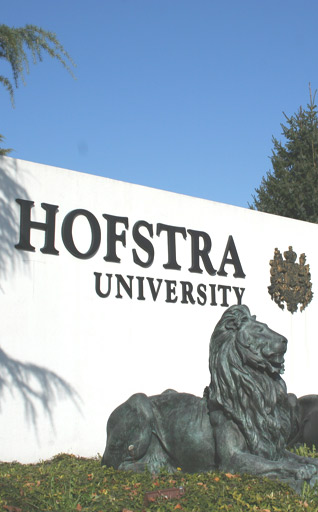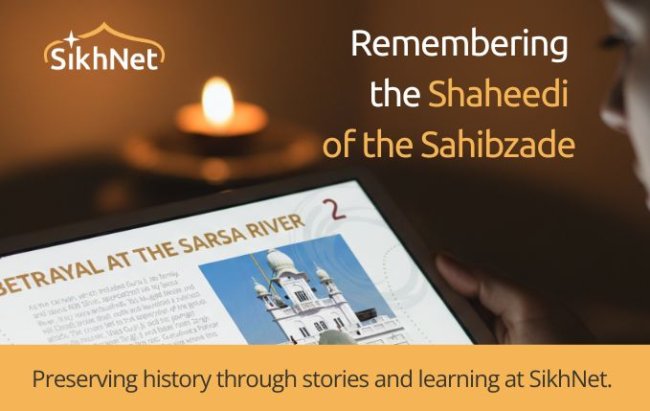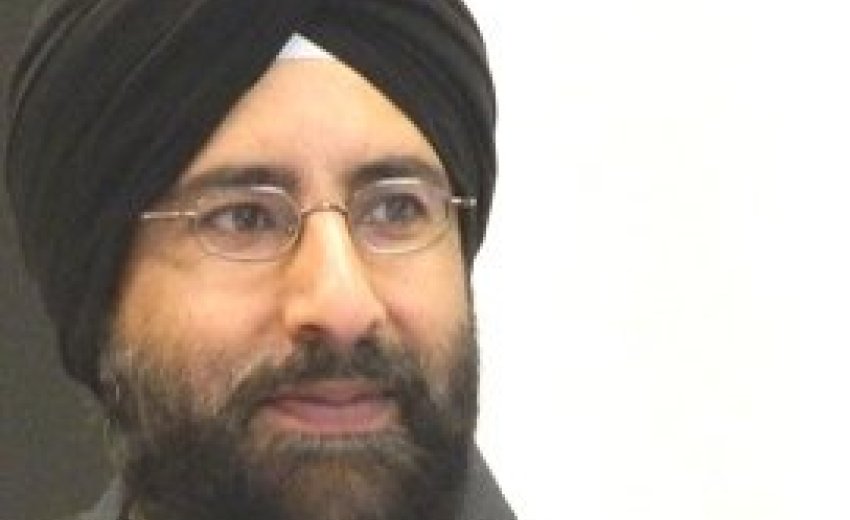What makes a scholar? And what goes into the making of a Sikh scholar?
This new series on sikhchic.com explores these very questions by looking closely at the life of one particular Sikh scholar. The subject selected for the purpose of this examination is Arvind-Pal Singh Mandair.
The following is Part III in the series.
 CHAPTER III - FROM NEW YORK TO MICHIGAN
CHAPTER III - FROM NEW YORK TO MICHIGAN
sikhchic.com: Last week you spoke of your project being ‘killed’ by some within the community. Even though you said that the funds for it had been successfully leveraged. What happened?
LOL … Well, as you might imagine, one section of the Coventry Sikh community was strongly influenced by politicians aligned with an established British political party and senior officials from the City Council. These politicians and council officials quickly saw the dangers of minority communities taking their development into their own hands and learning to avoid manipulation by the community “gate-keepers”, not to mention overcoming their dependency culture.
And then there were the Sikh community leaders who decided that the educated second generation youth were becoming too successful and that they might eventually pose too much of a threat to their leadership.
sikhchic.com: This all sounds very messy, not to mention distracting … and you were engaged with your second Ph.D. at the time?
Yes, it was a very complicated situation and certainly distracting, but thankfully a lot of it happened in the last two years of my research. But at the same time I have to confess that it taught me lessons about community politics, the whole façade of multiculturalism, and about how minority communities were politically and intellectually constrained by dominant frameworks, etc.
I could never have learned all this through books.
What was interesting about this was that I was researching the colonial politics of the Sikhs during the period of British imperialism. And here I was involved in the grass roots politics of multiculturalism in a supposedly post-colonial Britain …
The greatest lesson was observing how the Sikh and other minority communities could be so easily manipulated and yet remain utterly oblivious of it.
And a lot of this real life experience fed into my research work, and helped to shape a critical perspective. It’s the reason why my work engages so heavily in critical theory. I have an abiding suspicion of the frameworks within which our lives operate, irrespective of whether these frameworks are social, political and intellectual – very often a combination of all three.
sikhchic.com: Earlier, you spoke of your second Ph.D. being a gamble. Did the gamble pay off for you?
Yes, the gamble did pay off. Towards the end of 1997, a year before I finished the second Ph.D., I put on a course in South Asian history and culture and soon thereafter was able to take up my first post in the humanities, as lecturer at Coventry University (1997-1999) in the Department of History and Politics where I taught my first courses in Sikh studies.
This was followed two years later by a post at the School of Oriental and African Studies as a Research Fellow (1998-2001).
Then in September 2001, I moved with my family to New York to take up a newly created post in Sikh Studies at Hofstra University, becoming the first occupant of the Sardarni Kuldeep Kaur Bindra Chair in Sikh Studies.
I lived and worked in New York for 5 years before moving again, this time to the University of Michigan to become the first occupant of the S.B.S.C. Chair in Sikh studies. I’ve been at the University of Michigan ever since and am currently a tenured Associate Professor in the Department of Asian Languages and Cultures.
sikhchic.com: Tell us more about your move to the USA.
Well, there certainly were challenges.
Six months before I was due to take up the post at Hofstra, the donors asked me to organize a conference on Sikh heritage to coincide with the 2001 Vaisakhi celebrations.
On the morning of the conference, just as the first talk was taking place, the University’s public safety officers burst in and made the two hundred or so guests hurriedly vacate the hall and move to another building.
Apparently someone claiming to be from a Sikh organization had phoned in and said that a bomb had been planted in the hall.
sikhchic.com: I remember the incident quite vividly … I (T. Sher Singh) was there and recall the commotion … and the disruption.
Yes. We had to be moved to another building. But within 30 minutes the conference was back on track. The call turned out to be a hoax, but it was designed to send a message that certain elements of the Sikh community who had opposed the creation of Sikh Chairs in the past -- who in turn were being egged on by Indian government interests -- would be watching me closely.
It was somewhat irritating but I had seen plenty of this nonsense in the UK, so I wasn’t really surprised when it actually happened. Sadly, all it did was to reinforce an already poor image of us as a community.
Then in September 2001, a few days before I was actually due to fly out with my family to New York and start the post at Hofstra, I was again organizing a conference, this time at the University of London, on the theme of “Dialogue and Difference”.
Hofstra had kindly allowed me to delay the start of my classes to organize this conference. It was due to start on the morning of September 11 and I was supposed to be back in New York on the 13th.
As conference participants from China, the Middle East, Europe, the US, Japan, etc. were gathering for the first session, we watched the horrific scenes of the attacks on the World Trade Centre. It was surreal. Here we were, gathering for a conference to discuss the very idea of dialogue between cultures, and why it wasn’t happening, and at the same time watching the terrorist attacks taking place.
My heart actually sank at that moment, for I knew I had to fly into New York within 48 hours. I was receiving calls from relatives who told me to stay put in the UK for fear of a violent backlash from disturbed Americans.
But I also needed to start my new job and wasn’t sure how my employer would react to my delaying taking my class by another week or so.
To cut a long story short, we arrived in New York on September 13. The first few days at Hofstra were very difficult. There were constant fears of being attacked even on campus, and the University kindly asked one of the staff to accompany me for a few days until I got to know the lay of the land, as it were.
As far as classes were concerned I had to teach two sections of Asian Religions, to begin with. Rather than introducing myself as a Sikh and then having to make the customary distinction between Sikhs and Muslims, which seemed too clichéd at the time, even though it seemed to be so necessary to ensure one’s safety, I decided to take an experimental approach.
The students all thought I was a Muslim and I allowed them to think that almost for an entire semester until almost two thirds of the way through, one of them asked me point blank: “So which part of Islam do you belong to?”
Taking that class had had a transformative effect on many of them. My experiment had been designed to turn their suspicion of me (as a bearded turbaned male … whatever) into a suspicion of themselves and their own thoughts.
And I have kept that strategy intact ever since. I never overtly introduce myself as a Sikh (except obviously in my Sikhism studies classes) but instead try to move their raw perceptions away from my body to my words and thus try to cultivate a more productive encounter of ideas and affects.
sikhchic.com: Did things calm down after that? What else was memorable for you about this period?
Yes, they did calm down, although it was never completely comfortable. But the Sikh community itself was becoming more proactive and the Bindra family (the donors behind the Hofstra Sikh Studies Chair) and other influential Sikhs in New York played an important role in fostering stronger political connections between the community and state authorities such as the police and public officials.
Especially beneficial were several visits to the State Assembly and Legislature in Albany, meetings with the NY State Governor and various other officials.
I continued to organize a number of conferences at Hofstra on various topics.
The most memorable of all was the 2004 conference called “Remembering and Forgetting” to commemorate 20 years since the 1984 attacks on the Harmandar Sahib and the Delhi anti-Sikh pogroms (which then spread to the rest of India).
I remember it being a very tense event (certainly for me) that attracted Sikhs from all over the USA. It was the only academic conference to mark 1984 in this way that I know of, and I remember the university being a bit nervous about it, given the emotions that could be stirred if things went wrong.
The conference hall was packed to overflowing with Sikhs who had very diverse opinions. The scholars invited were also somewhat nervous, and we had to patrol the audience like hawks to avoid arguments breaking out, or to prevent people just ranting on and on, as so often happened … but thankfully, common sense prevailed and the spirit of debate carried the day.
People can read about this event and others that I organized on the “Past Events” page of a new website that I’m working on with some students and friends. Its called SikhStudiesForum.com and will be out fairly shortly.
sikhchic.com: What about events geared for the community, not just academics? Did you organize any of these?
In fact, yes … now that you mention it. I organized a series of intensive one-week residential summer seminars in which members of the community were invited to join a student audience.
Basically I ran a 3-credit advanced undergraduate / postgraduate class condensed into a week, and it was opened up to the community. Two other professors were invited to co-teach this seminar. It was really hard work but the end result was worth it.
Some of the sessions were conducted outdoors in the beautiful May sunshine and everyone loved it. I also helped to organize, and was an MC for the first two New York Film Festivals (2005 and 2006) - then known as The Spinning Wheel Film Festival and franchised from its mothership in Toronto.
Since I left New York, these have grown even more into incredibly successful events, so it was a nice to have been involved in organizing them.
sikhchic.com: And you joined the University of Michigan in 2006? Tell us a little bit about what you’ve been up to since then? What do you consider your main achievements at Michigan?
My transition to Ann Arbor was relatively smooth, but it delayed my book projects by about two years.
I was due to start a period of research leave at Hofstra in 2005 but didn’t get to use it there, due to the move. The University of Michigan is intellectually intense, really supportive as far as research is concerned, and provided a great platform for my ideas which tend to cross disciplinary boundaries very easily … and they tend to encourage that here.
I’ve organized three workshops since I’ve been here. One was on “Sikhs and Public Space“, which I’m in the process of publishing right now.
Another was a residential summer seminar called “Key Concepts in Gurmat” in July 2012. This was a continuation of the summer seminars in New York, and I plan to make these into an accredited course.
In 2005, with the help of two colleagues (Pal Singh Ahluwalia, who was then at University of California, San Diego, and is currently a Pro-Vice Chancellor at the University of South Australia; and Gurharpal Singh, who is currently a Dean at the School of Oriental and african Studies, University of London), I set up a new scholarly journal called “Sikh Formations“.
The journal is now well established and published by Routledge, a global academic publisher. It is published 3 times a year and appears both online and in print.
What else …? Oh, I’m shortly going to be launching a sister website to “Sikh Formations“. Did I already mention that? It is called “Sikh Studies Forum” and will be run by our graduate students here.
Apart from that I think my main activity at Michigan has been to focus on research (I published several books since coming here and am working on a bunch of others), having achieved tenure in 2011.
We also have a highly rated graduate programme which caters for research in Sikh studies, and we have some really excellent graduate students working in areas such janam-sakhi literature, contemporary modes of katha, gurbani kirtan and on Sikhs in public space.
In 2011, just after getting tenured here, University of Michigan‘s College of Literature, Science and the Arts organized a big event to celebrate the formal inauguration of the Endowed Chair in Sikh Studies. This was really to salute Michigan’s Sikh community and especially those who spearheaded the fund-raising efforts to establish the Chair of Sikh studies here.
The project had taken them over twenty years. There were many ups and downs during that process, including hostile opposition from some narrow minds in the community who wanted to simply destroy these Sikh chairs without understanding the wider implications and processes at work.
It was a real tribute to people like Dr. Virinder Singh Grewal and his family, to Drs. Amrik Singh Chattha and Jaswinder Kaur Chattha of West Virginia and family, and of course to the Sikh Foundation (Michigan) which has been very ably led by Raman Singh and others. And one must not forget the efforts of Professor Pashaura Singh who taught some of the early courses in Sikh history here at Michigan back in the late 1990’s and often had to face the brunt of hostile opposition.
This event was centered around an Inaugural Address which I gave (titled: “Sikh Studies and the Secular University”). I’m thinking of eventually putting the talk online. The Address gave a significantly different take on the challenges of establishing Sikh studies centres. It was really well attended by the public and the Rachkam Amphitheater was full to over flowing.
To be continued …
To read Part I, please CLICK here.
To read Part II, please CLICK here.

